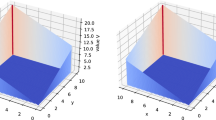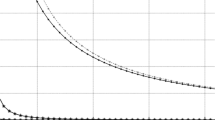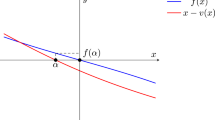Abstract
Stochastic optimization/approximation algorithms are widely used to recursively estimate the optimum of a suitable function or its root under noisy observations when this optimum or root is a constant or evolves randomly according to slowly time-varying continuous sample paths. In comparison, this paper analyzes the asymptotic properties of stochastic optimization/approximation algorithms for recursively estimating the optimum or root when it evolves rapidly with nonsmooth (jump-changing) sample paths. The resulting problem falls into the category of regime-switching stochastic approximation algorithms with two-time scales. Motivated by emerging applications in wireless communications, and system identification, we analyze asymptotic behavior of such algorithms. Our analysis assumes that the noisy observations contain a (nonsmooth) jump process modeled by a discrete-time Markov chain whose transition frequency varies much faster than the adaptation rate of the stochastic optimization algorithm. Using stochastic averaging, we prove convergence of the algorithm. Rate of convergence of the algorithm is obtained via bounds on the estimation errors and diffusion approximations. Remarks on improving the convergence rates through iterate averaging, and limit mean dynamics represented by differential inclusions are also presented.
Similar content being viewed by others
References
Benveniste A., Metivier M. and Priouret P. (1990). Adaptive algorithms and stochastic approximations. Springer, New York
Billingsley P. (1968). Convergence of probability measures. Wiley, New York
Buche R. and Kushner H.J. (2000). Stochastic approximation and user adaptation in a competitive resource sharing system. IEEE Trans. Autom. Control 45: 844–853
Chen H.-F. (2002). Stochastic approximation and its applications. Kluwer Academic, Dordrecht
Chin, D.C., Maryak, J.T.: A cautionary note in iterate averaging in stochastic approximation. In: INFORMS annual meeting pp. 5–8 (1996)
Chung K.L. (1954). On a stochastic approximation method. Ann. Math. Stat. 25: 463–483
Dippon J. and Renz J. (1997). Weighted means in stochastic approximation of minima. SIAM J. Control Optim. 35: 1811–1827
Ephraim Y. and Merhav N. (2002). Hidden Markov processes. IEEE Trans. Inform. Theory 48: 1518–1569
Haykin S. (2005). Cognitive radio: brain empowered wireless communications. IEEE J. Sel. Areas Commun. 23: 201–220
Krishnamurthy V. and Rydén T. (1998). Consistent estimation of linear and non-linear autoregressive models with Markov regime. J. Time Ser. Anal. 19: 291–308
Krishnamurthy V. and Yin G. (2002). Recursive algorithms for estimation of hidden Markov models and autoregressive models with Markov regime. IEEE Trans. Inform. Theory 48(2): 458–476
Krishnamurthy V., Yin G. (2006) Controlled hidden Markov models for dynamically adapting patch clamp experiment to estimate Nernst potential of single-ion channels. IEEE Trans. Nanobiosci. 5, 115–125 (2006)
Krishnamurthy V., Wang X. and Yin G. (2004). Spreading code optimization and adaptation in CDMA via discrete stochastic approximation. IEEE Trans. Inform. Theory 50: 1927–1949
Kushner H.J. (1984). Approximation and weak convergence methods for random processes, with applications to stochastic systems theory. MIT Press, Cambridge
Kushner H.J. and Huang H. (1981). Asymptotic properties of stochastic approximations with constant coefficients. SIAM J. Control Optim. 19: 87–105
Kushner H.J. and Yang J. (1993). Stochastic approximation with averaging of iterates: optimal asymptotic rate of convergence for general processes. SIAM J. Control Optim. 31: 1045–1062
Kushner H.J. and Yin G. (2003). Stochastic approximation and recursive algorithms and applications. 2nd edn. Springer, New York
Nevel’son, M.B., Khasminskii, R.Z.: Stochastic approximation and recursive estimation. Translation of Math. Monographs, vol. 47. AMS, Providence (1976)
Polyak B.T. (1990). New method of stochastic approximation type. Autom. Remote Control 51: 937–946
Polyak B.T. and Juditsky A.B. (1992). Acceleration of stochastic approximation by averaging. SIAM J. Control Optim. 30: 838–855
Ruppert D. (1991). Stochastic approximation. In: Ghosh, B.K. and Sen, P.K. (eds) Handbook in sequential analysis., pp 503–529. Marcel Dekker, New York
Schwabe R. (1993). Stability results for smoothed stochastic approximation procedures. Z. Angew. Math. Mech. 73: 639–644
Spall J.C. (1992). Multivariate stochastic approximation using a simultaneous perturbation gradient approximation. IEEE Trans. Autom. Control AC-37: 332–341
Spall J.C. (2003). Introduction to stochastic search and optimization: estimation, simulation and control. Wiley, New York
Tarighat A. and Sayed A.H. (2004). Least mean-phase adaptive filters with application to communications systems. IEEE Signal Process. Lett. 11: 220–223
Yin G. (1990). A stopping rule for the Robbins–Monro method. J. Optim. Theory Appl. 67: 151–173
Yin G. (1991). On extensions of Polyak’s averaging approach to stochastic approximation. Stoch. Stoch. Rep. 36: 245–264
Yin G. (1999). Rates of convergence for a class of global stochastic optimization algorithms. SIAM J. Optim. 10: 99–120
Yin G. and Krishnamurthy V. (2005). Analysis of LMS algorithm for slowly varying Markovian parameters—tracking slow hidden Markov models and adaptive multiuser detection in DS/CDMA. IEEE Trans. Inform. Theory 51: 2475–2490
Yin G. and Krishnamurthy V. (2005). Least mean square algorithms with Markov regime switching limit. IEEE Trans. Autom. Control 50: 577–593
Yin G. and Zhang Q. (2005). Discrete-time Markov chains: two-time-scale methods and applications. Springer, New York
Yin G., Krishnamurthy V. and Ion C. (2004). Regime switching stochastic approximation algorithms with application to adaptive discrete stochastic optimization. SIAM J. Optim. 14: 1187–1215
Author information
Authors and Affiliations
Corresponding author
Additional information
Dedicated to Professor Boris Polyak on the occasion of his 70th birthday.
The research of G. Yin was supported in part by the National Science Foundation under DMS-0603287, in part by the National Security Agency under MSPF-068-029, and in part by the National Natural Science Foundation of China under #60574069. The research of C. Ion was supported in part by the Wayne State University Rumble Fellowship. The research of V. Krishnamurthy was supported in part by NSERC (Canada).
Rights and permissions
About this article
Cite this article
Yin, G., Ion, C. & Krishnamurthy, V. How does a stochastic optimization/approximation algorithm adapt to a randomly evolving optimum/root with jump Markov sample paths. Math. Program. 120, 67–99 (2009). https://doi.org/10.1007/s10107-007-0145-1
Received:
Accepted:
Published:
Issue Date:
DOI: https://doi.org/10.1007/s10107-007-0145-1
Keywords
- Stochastic approximation
- Stochastic optimization
- Nonsmooth-jump component
- Two-time scale
- Convergence and rate of convergence




